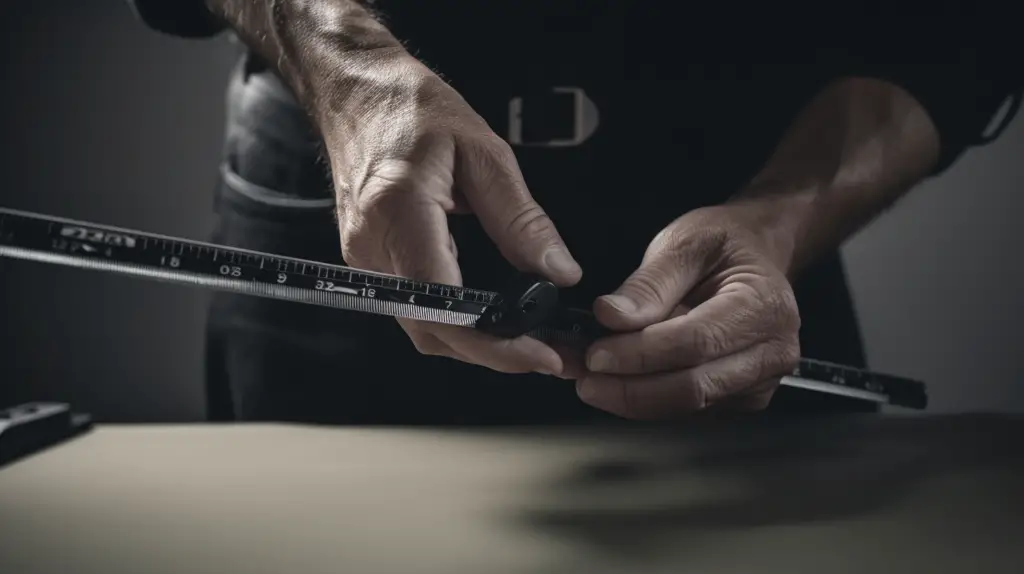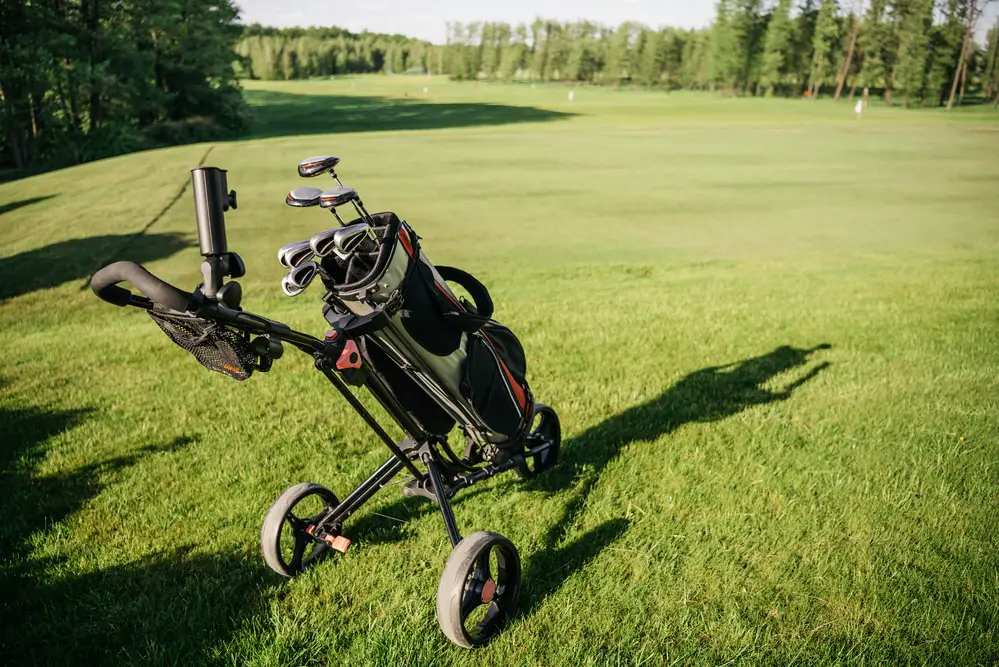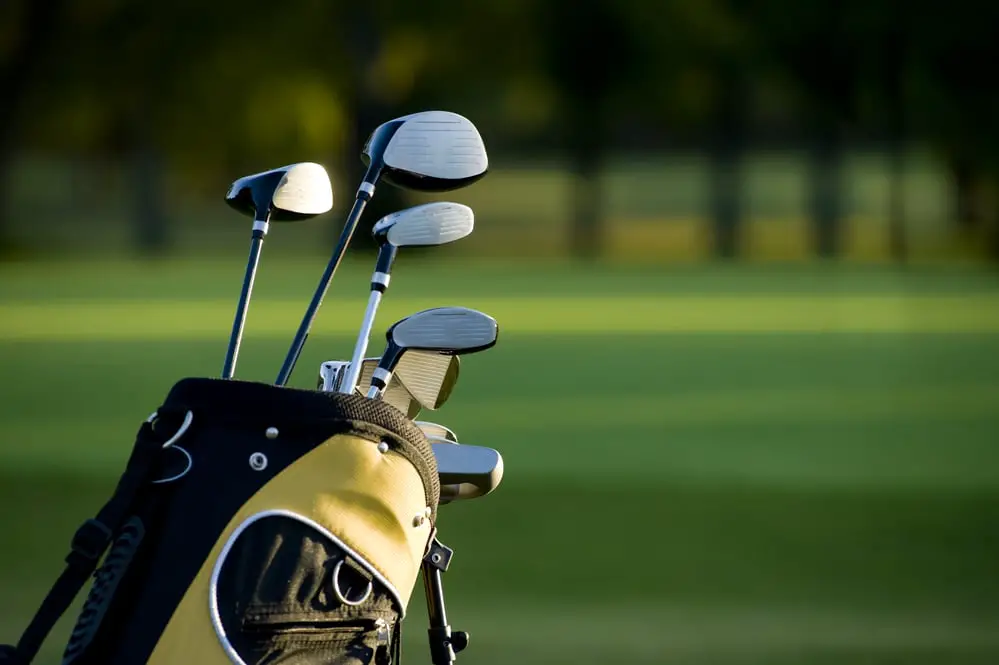Last Updated on November 15, 2023
If you’re an avid golfer, then you know how important it is to measure a golf club correctly. Whether you are shopping for a new set or customising your existing clubs, taking the right measurements can make all the difference in achieving that perfect swing. But what exactly do we mean by measuring a golf club? Let’s explore some of the basics like grip size, shaft length, loft angle and lie angle – not forgetting weight distribution. So if you want to up your game with precision-measured clubs, read on for more information about how to measure a golf club properly.
Table of Contents:
Grip Size
The first step in finding the right grip size for you is to measure your hand. To do this, hold a club in your left hand (for right-handed players) and wrap your fingers around it as if you were about to take a shot. Measure from the tip of your middle finger to the crease at the base of your palm – this will give you an accurate measurement of what kind of grip size works best for you.
For those with smaller hands or shorter fingers, a smaller grip may be better suited for them as it gives them more control over their shots due to its tighter fit in their hands. On the other hand, larger grips are usually recommended for those with bigger hands or longer fingers because they provide extra cushioning, which helps reduce fatigue during long rounds on the course.
Considering the amount of pressure you apply to each shot is also essential when selecting a grip size. If you tend to use too much force while swinging, then opting for a slightly larger than normal-sized grip could be beneficial as it offers additional cushioning that can absorb some of that excess power without compromising accuracy or distance off tee boxes or fairways.
Finally, make sure that whatever type of golf club shaft length and loft angle combination works best for your game matches up with the grip size that fits comfortably in your hands; otherwise, all other adjustments won’t matter if there isn’t proper balance between these three components.
Shaft Length
When selecting a shaft length, it’s important to consider your body type. Taller players tend to benefit from longer clubs, while shorter players should opt for shorter ones. Additionally, those with long arms may need longer clubs than those with short arms. Swing speed also plays a role in determining the right shaft length; faster swings require more flex to generate power, while slower swings can use stiffer shafts for better control over shots.
It’s also essential to take into account how you’ll be using the club when choosing its size. For example, if you’re looking for maximum distance off the tee, then a longer driver might be best, whereas if you’re aiming for greater accuracy around the green, then a shorter iron would suit your needs better.
Finally, it’s worth noting that most manufacturers offer adjustable lengths so players can customise their clubs to fit them perfectly – something that makes a difference when playing at peak performance levels.
Loft Angle

The most common club lofts are between 8 and 12 degrees for drivers, 16 to 18 degrees for 3-woods, 20 to 24 degrees for 4-woods, 25 to 28 degrees for 5-woods and 30 to 36 degrees for hybrids. Irons typically range from 22 to 45-degree lofts depending on their number (e.g., 9 iron = 45°). Wedges have even greater lofts ranging from 46° up to 64°, with lob wedges having a maximum of 68° loft angles available today.
It is imperative to comprehend that each kind of club has its own particular reason dependent on its plan attributes, for example, length, shaft flex and head shape, yet additionally by its loft angle, which helps decide how far you can hit it precisely just as what sort of turn you can create on your shots – either backspin or sidespin contingent upon whether you need more authority over separation or exactness separately.
If you are seeking maximum distance off the tee, then a driver with an 8-degree loft will give less spin than if you were to use a 3 wood at 16 degrees; this higher launch angle can keep your ball airborne for longer before it lands due to increased backspin. Conversely, when accuracy is paramount, using an iron such as a 7 iron at 27 degrees may be more appropriate since it offers less lift resulting in decreased curvature, while still providing adequate height so that your shot does not land too short because of lack of spin imparted during impact.
Lie Angle
Lie angle is an important factor in determining the accuracy of your shots. It refers to the angle between the sole of a golf club and its shaft when viewed from the address position. A lie angle that is too flat or too upright can cause mis-hits and poor ball flight.
The ideal lie angle for each golfer depends on their body type, swing style, and personal preference. Generally, taller players tend to need more upright lies, while shorter players may prefer flatter lies. Players with steep swings often require flatter lies than those with shallower swings as well.
When selecting a new set of clubs, it’s important to make sure they are fit properly for your individual needs so you can get the maximum performance out of them. Lie angles should be checked at least once per year by a qualified professional fitter who will measure your posture and analyse your swing before making any necessary adjustments.
If you find yourself hitting shots consistently offline, then checking your lie angles could be one way to help correct this issue quickly without having to make major changes in technique or equipment setup. Even small tweaks can have big impacts on how well you hit the ball, so don’t underestimate what adjusting your lie angles can do to improve accuracy.
Weight Distribution
Weight distribution is an important factor when it comes to golf clubs. It affects how a club feels in your hands, how well you can control the ball and even how far you can hit it. Weight distribution refers to where the weight of a club is located on its head or shaft. A balanced weight distribution will help create more consistent shots and improved accuracy, while an unbalanced one could lead to poor performance.
When talking about weight distribution, there are two main areas that need to be considered: centre of gravity (CG) and moment of inertia (MOI). The CG is the point at which all of the mass in a clubhead or shaft is concentrated. This determines how much energy is transferred from your swing into the ball during impact, so having a low CG helps increase distance by increasing the launch angle and spin rate off the tee. MOI measures resistance against twisting forces generated during impact with the ball; higher MOI means less twisting for better accuracy off-centre hits.
Conclusion
Now that you know how to measure a golf club, it’s time to get out there and hit the links. With the right measurements in hand, you’ll be able to find the perfect golf club for your game. Whether you’re just starting out or an experienced golfer, having a properly fitted golf club can make all the difference in improving your swing and lowering your scores. So don’t forget – take some time to measure a golf club before purchasing one


